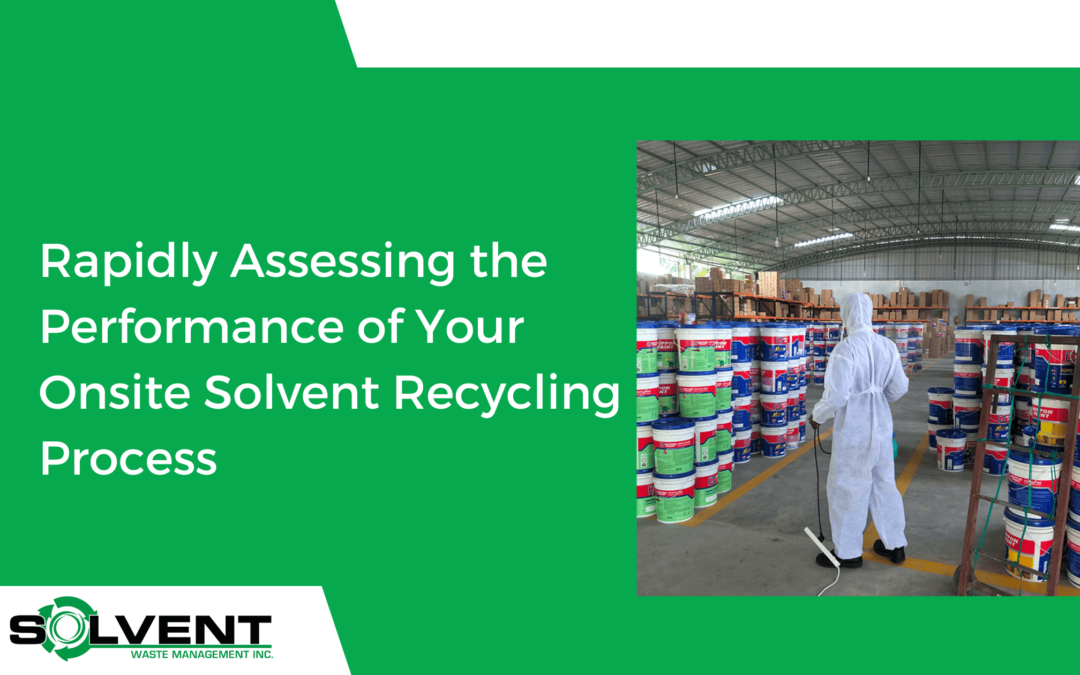Regularly reviewing the health of your onsite solvent recycling process is crucial to ensure its efficiency, effectiveness, and compliance with environmental regulations. By conducting quick and thorough assessments, you can identify any potential issues, optimize your recycling operations, and maintain the quality of recycled solvents. In this article, we will discuss key steps to help you quickly review the health of your onsite solvent recycling process.
Introduction
Regularly reviewing the health of your onsite solvent recycling process ensures that it operates optimally, meets quality standards, and complies with regulations. By following the steps outlined in this article, you can quickly assess the overall performance of your recycling process and make necessary improvements.
Establish Key Performance Indicators (KPIs)
Start by establishing key performance indicators (KPIs) that align with your recycling goals. These KPIs should reflect important aspects such as solvent recovery rate, energy consumption, waste reduction, and cost savings. Measure and track these KPIs regularly to evaluate the health of your recycling process.
Conduct Visual Inspections
Perform visual inspections of your onsite solvent recycling equipment, storage areas, and handling procedures. Look for any signs of leaks, spills, equipment malfunctions, or improper storage practices. Check if safety protocols are being followed and if employees are using appropriate personal protective equipment (PPE).
Review Process Documentation
Review your process documentation, including standard operating procedures (SOPs) and work instructions. Ensure that they are up to date, accurate, and comprehensive. Verify that employees are following the documented procedures correctly. Identify any gaps or inconsistencies that need to be addressed.
Analyze Quality Control Data
Analyze the data from your quality control measures to assess the quality of the recycled solvents. Review test results for impurities, contaminants, and other quality parameters. Identify any trends or deviations that may indicate issues with the recycling process. Take corrective actions as needed.
Evaluate Compliance with Regulations
Ensure compliance with environmental regulations and permits governing onsite solvent recycling. Review relevant regulations, permits, and reporting requirements to confirm adherence. Assess if your recycling process meets the specified standards and if necessary documentation and records are maintained.
Seek Feedback from Employees
Engage with employees involved in the onsite solvent recycling process and gather their feedback. They often have valuable insights and firsthand experience that can shed light on process inefficiencies or potential improvements. Encourage open communication and consider their suggestions for enhancing the recycling process.
Implement Continuous Improvement Measures
Based on the findings from the previous steps, develop and implement continuous improvement measures. Address any identified issues, such as equipment maintenance, employee training, process optimization, or documentation updates. Regularly monitor the effectiveness of these measures and adjust as needed.
Conclusion
Regularly reviewing the health of your onsite solvent recycling process is essential for maintaining its efficiency, effectiveness, and compliance. By establishing KPIs, conducting visual inspections, reviewing process documentation, analyzing quality control data, evaluating compliance, seeking employee feedback, and implementing continuous improvement measures, you can ensure that your recycling process operates optimally and produces high-quality recycled solvents.
FAQs (Frequently Asked Questions)
- Q: How often should I review the health of my onsite solvent recycling process?
- A: It is recommended to conduct regular reviews at least quarterly or as needed based on the scale and complexity of your recycling operations.
- Q: What are some common KPIs for onsite solvent recycling?
- A: Common KPIs include solvent recovery rate, energy consumption, waste reduction, cost savings, and compliance with regulatory requirements.
- Q: How can I ensure compliance with environmental regulations?
- A: Stay updated with relevant regulations, obtain necessary permits, maintain records, and implement appropriate monitoring and reporting procedures.
- Q: What should I do if I identify issues during the review process?
- A: Take prompt corrective actions based on the nature of the issue. This may involve equipment maintenance, employee training, process optimization, or documentation updates.
- Q: How important is employee feedback in improving the recycling process?
- A: Employee feedback is valuable as it provides insights from those directly involved in the process and can help identify potential areas for improvement.

